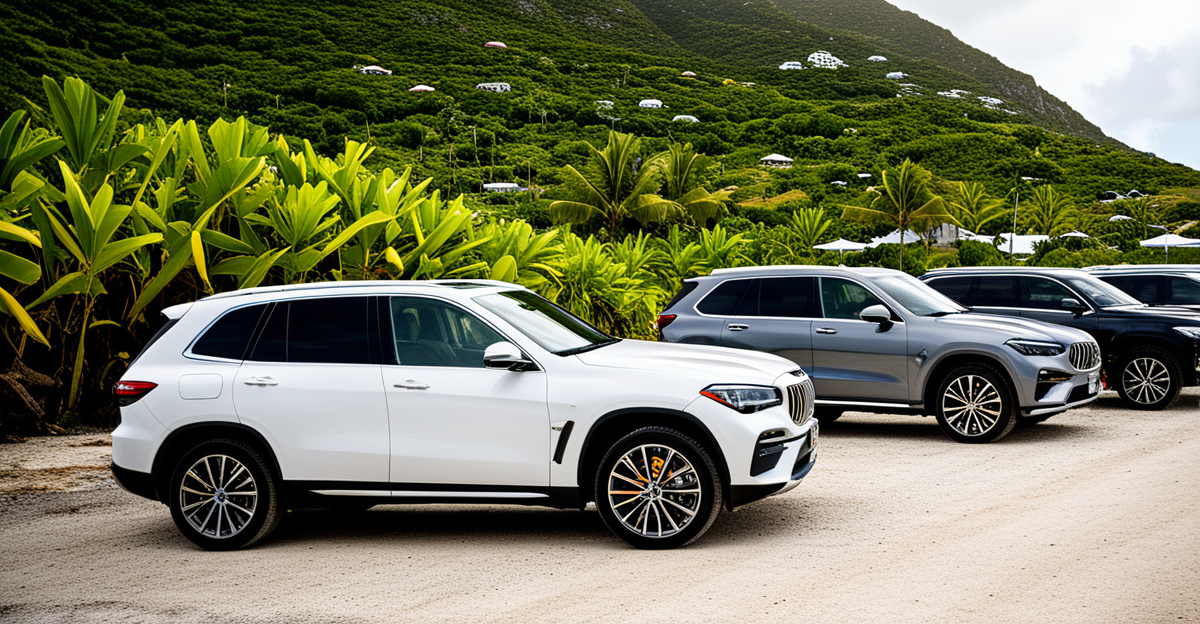Exploring St Barts demands a vehicle that matches its vibrant luxury and rugged terrain. From sleek luxury cars to spacious SUVs, renting the right car lets you navigate the island’s unique roads with ease and style. Discover how to choose, book, and enjoy your ideal ride while uncovering practical tips for a smooth driving experience tailored to St Barts’ exclusive vibe.
Essential guide to car rental in St Barts: options, agencies, requirements, and top tips
With a diverse fleet of vehicles and flexible services, our car rental agency ensures travelers find the right fit for their needs. St Barts is home to major players like Hertz, Sixt, and Maurice Car Rental, offering everything from compact city cars and robust 4x4s to luxury convertibles and eco-friendly models. At the airport, in Gustavia, or via direct hotel and villa delivery, agencies provide convenient pick-up and drop-off to maximize your time on the island.
Also read : Uncover Hidden Gems: Top UK Cities with Rich Brewery Histories for Your Next Adventure
To book, most agencies require drivers to be at least 21 years old with a full, valid license; higher age minimums may apply for some luxury and specialty vehicles. Essential documents include a passport or European ID. International driving permits may be necessary depending on your country of origin.
Insurance choices range from basic coverage which always includes a damage waiver and third-party protection to premium packages for more comprehensive peace of mind. Payment options typically cover credit cards, with agencies sometimes accepting debit cards or cash.
Also to read : Discover the Best UK Destinations for Captivating Guided Tours in British Glassmaking History
Rental extras such as child seats, GPS units, and additional driver options are available for tailored journeys. For smooth booking, reserve early during high season or access last-minute deals off-season. Island agencies aim to deliver comfort, flexibility, and safety for seamless exploration.
Vehicle choices and booking considerations for every traveler
Comparison of rental vehicle types: economy, luxury, convertibles, SUVs, 4x4s, and Mini Mokes
Precision: The most practical rental for island travel depends on your group size, driving style, and desired comfort. The Kia Picanto stands out for affordability and maneuverability, favored by couples and solo travelers. For rugged exploration or beach access, Suzuki Jimny and Jeep Wrangler offer four-wheel drive durability and extra ground clearance. Those seeking open-air experiences enjoy the island’s convertible car rentals like the Mini Cooper Convertible or T-Roc Convertible. Luxury SUVs such as the Audi Q3 Sportback suit families or guests prioritizing elegance and ample space. Mini Mokes are popular for their fun, breezy vibe on scenic routes.
Recommended models for island driving: size, comfort, and fuel efficiency
Compact cars are ideal for narrow streets, with air-conditioned models enhancing comfort in the island’s warm climate. Convertibles turn any drive into a leisure activity, letting you soak up St Barts’ sun and breeze. Consider electric and fuel-efficient vehicles like the Renault Zoe for eco-friendly and cost-saving travel.
Booking strategies: advance booking discounts, seasonal price variations, last-minute rental opportunities
Advance booking secures better prices peak seasons often see elevated rates and lower availability. Seasonal deals and online offers reward early planners, while last-minute opportunities may arise outside busy periods. Some providers promote flexible rental durations and extra conveniences, such as tailored pick-up and delivery, to suit unique stay lengths and traveler preferences.
Renting logistics: pick-up/drop-off, coverage, extras, and policies
Airport and city pick-up/drop-off: procedures, maps, and tips for a smooth start
Locations for pick-up and return are well-mapped at Saint-Barthélemy’s airport, the port of Gustavia, and through delivery to hotels or villas. At Gustav III Airport, car rental counters are positioned close to baggage claim look for signage after arrival. Delivery to your lodging is possible with many providers, simplifying island arrival, particularly when traveling with family or bulky luggage. To maximize convenience, confirm opening hours, as major providers maintain extended hours or round-the-clock support, and always check where to park for returns. For out-of-hours drop-off, use clearly marked return zones; leave the keys in the designated drop-box and note the vehicle’s condition by taking timestamped photos.
Insurance, coverage, and deposits: what’s included, optional extras, and refunds
Most rentals come with basic insurance, such as third-party liability and collision waiver. Additional packages to limit out-of-pocket expenses from full damage waivers to enhanced personal accident coverage are widely available. Deposits are generally pre-authorized on your credit card at vehicle collection; these are adjusted once the car is returned undamaged and fueled as agreed.
Add-ons and extras: GPS, child seats, Sat Nav, extras for families and accessibility
Many providers supply child seats, Sat Navs, and GPS devices for a small daily fee. Family-friendly extras include booster seats and sun shades. Request these items in advance, particularly at busy times, and inquire about vehicles with extra trunk space or accessible entry features for travelers with mobility needs.
Rental policies: extensions, cancellations, out-of-hours return, sanitation protocols
Rental extensions can often be completed by contacting customer service or using automated booking portals. Cancellation terms are flexible, with free changes or cancellations up to a cut-off time before pick-up. Cars are thoroughly cleaned between rentals, with enhanced sanitation measures in effect year-round to reassure all travelers about cleanliness and hygiene. Roadside assistance and emergency contacts are provided in the rental paperwork, ensuring peace of mind across the island.
Island driving guide: planning your trip with practical tips and routes
Navigating St Barts: rules, safety guidance, and necessary documents for foreign drivers
Drivers in St Barts must carry a valid driver’s license and passport or ID at all times. International visitors with licenses in Roman alphabet do not require an international permit, but those with non-Roman scripts should present an International Driving Permit. The minimum driver age is 21; some premium or specialty vehicles may require a higher minimum age or additional insurance. Wearing seatbelts is mandatory, and the island enforces right-hand traffic. Speed limits are generally low main roads typically allow 50 km/h or less, with reduced speeds in villages and near beaches. Avoid phone use while driving, and never drink and drive.
Best routes for exploring beaches, must-see sights, and scenic drives
St Barts’ compact size allows drivers to reach popular spots like St Jean Beach, Colombier, or Saline Beach within minutes. A loop from Gustavia to Lorient and Grand Cul-de-Sac reveals panoramic coastal views and convenient stops at local bakeries and scenic lookouts. The winding route to Flamands Beach offers lush landscapes, while driving to Toiny is suggested for those seeking quieter, untouched areas. Most roads are paved but narrow; 4x4s enhance comfort on hilly routes.
Tips for parking, eco-friendly choices, and how to make the most of your rental car
Parking is free in most public areas, notably Gustavia’s harbor front look for white-marked zones and observe time limits. Compact cars simplify city parking. For eco-conscious renters, electric and hybrid models are available and well-suited for the island’s short distances. Choosing off-peak times reduces traffic and provides easier parking. Always check if your hotel or villa offers private parking arrangements for added convenience.










